Two’s Company
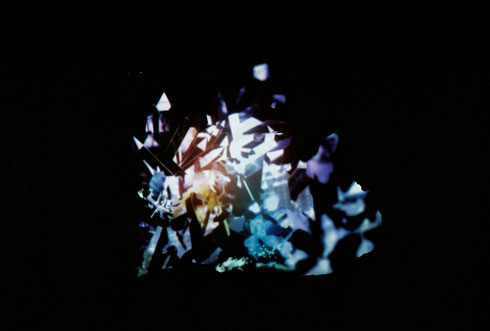
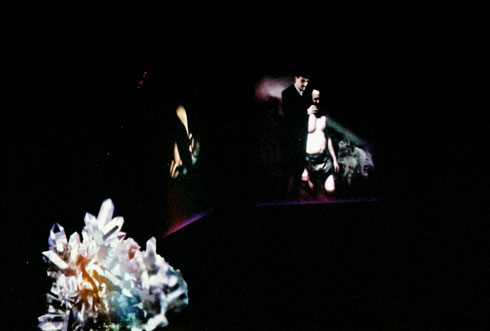
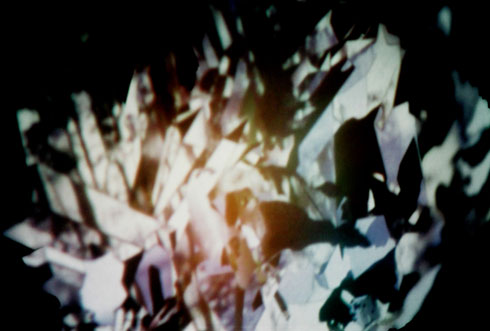
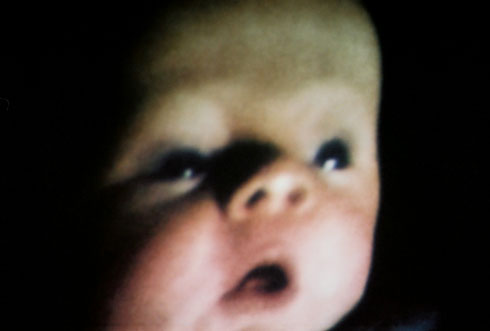
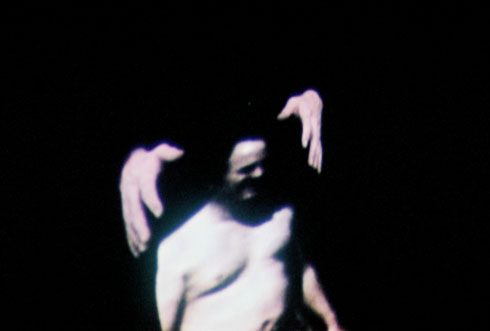
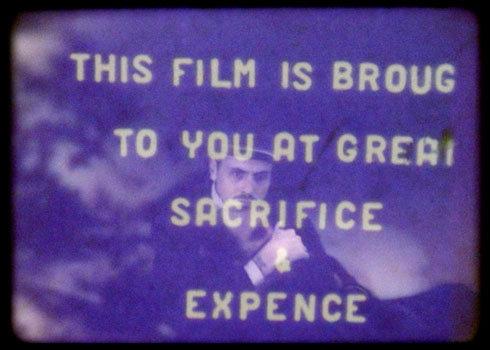
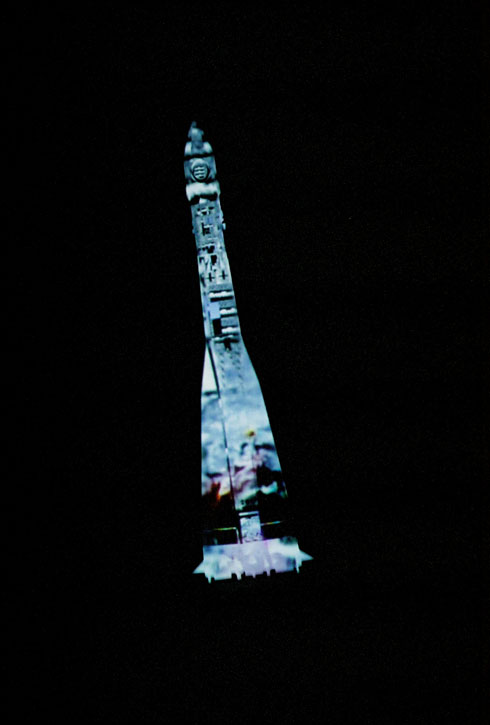
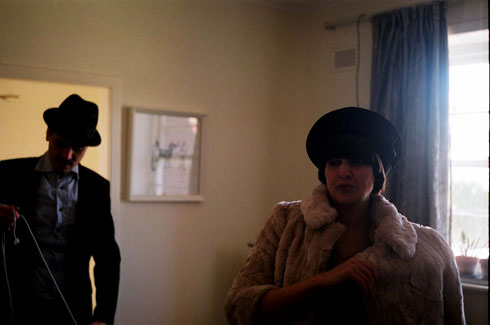 Text: Millie Stein Images: Ms&Mr & Samuel Hodge
Text: Millie Stein Images: Ms&Mr & Samuel Hodge
Mostly, people talk about Ms&Mr – Richard and Stephanie nova Milne – in twos. The artists are married. They form a pair. Their video work returns the missing half to the other’s side by editing home movies into an impossible history. They are the first people in Australia to undertake a joint Masters degree in the arts.
But something else arises from the pairing. Ms&Mr’s work is not limited to two halves, or the sum of its parts, or however you want to put it. The artists invoke a third, spectral presence which is tough to locate and even tougher to describe.
There’s a discussion of this phenomenon in Platonian theory, which states that two halves can only be reconciled by a midpoint. This midpoint is a third and separate function that simultaneously draws the halves together and surpasses them as the product of their union. The alchemists took this third thing to be mystical in nature, a symbol of transcendence.
It is apt, then, that the nova Milnes are interested in particle theory, science fiction and time travel. Their work draws from fields of enquiry that generate ambiguity as quickly as they attempt to quell it. Rather than try to simplify these ideas in their work, Ms&Mr complicate them further still.
The artists implicate themselves as both creators and subjects, playing with taken-for-granted realities such as time and space until they begin to make complete and perfect confusion. Not “nonsense,” just non-sense. In doubling back upon themselves, Ms&Mr embrace paradox. These are people with their fingers permanently crossed, in the hope that some things will never be able to be explained.
Millie Stein: What are you mainly thinking about these days in terms of your practice?
Stephanie nova Milne: We are interested in collaboration as a condition in itself, and that condition as a medium. I guess we’re thinking about things like theoretical physics and ways to escape the banality of domestic relations. Recently we’ve developed work that crosses ideas of science fiction, and we actually see our work as a kind of science fiction, in a domestic sense, because we’re interested in making alternate relationships. We’re trying to break down the confines of how we understand time, in particular.
MS: Do you see time as a fiction?
SNM: In some of our video works that incorporate our home movies, I’m relating to Richard as a child. In one sense that’s a fiction, but for us as the creators and the subjects it crosses over very quickly in to a reality because of our confusion with the document. It comes from biographical information, but then there’s a certain point where, between us, we create something other – something external. We like to think that this becomes just as valid as an original source. In that sense we’re kind of living in an altered state, although it feels quite natural.
MS: There are enormous possibilities in considering your work as a ‘third,’ independently functioning entity.
Richard nova Milne: You know the Large Hadron Collider that started up last year? They’re throwing two particles together almost at the speed of light, and the result is that the particles create a third entity at the point that they smash together. It’s unlocking the mysteries of black holes, the beginning of time, the birth of universes. It’s a study of dynamic relationships on the other end of the spectrum, concerning the universe itself. Not to sound so grand with our practice but it is similar to smashing different elements of time together, multiple subjectivities, and seeing what happens. Through that process, it’s a study of relationships. Not only our relationship, but also one’s relationship to someone else, to oneself, to one’s past or future. It’s really just throwing it all up in the air.
MS: In writing that discusses ‘three’ as a symbol of transcendence, there’s also a lot about how three is an unstable structure which must return, at some point, to ‘four’ as a symbol of wholeness. What do you think about this in relation to your work?
RNM: I think that’s where there’s a poltergeist-like dimension, the fourth or even possibly the fifth dimension, where things start to undo themselves and reveal something else. The nature of video has been specifically interesting in that regard. It’s a linear process, with a beginning, middle and end, but we create loops. These loops are little zeroes: nothing and everything. Our practice is more like a Mobius strip. It loops on itself, although not in a tricky way. We might get caught in this black-hole-loop-thing, get sucked into it, but that is just a casualty of tinkering with this subject matter.
MS: Why do you think responses to your work range from ‘beautiful’ and ‘sentimental’ to ‘creepy’?
SNM: I think people are responding to this sense of childhood as a kind of sacred zone, which is still highly romanticized in our society. They’re sometimes horrified at the idea of us changing what they perceive as a self-contained and valuable artifact. It was not really until the eighties that people could afford to have videotape and film, so this obsessive documentation in the form of moving image is relatively new. Kids started to pick up the camera and document their own lives, but it was often that they were documented by someone else. In that sense, the eye of the camera is someone else’s and someone else has authorship of that image. Changing it returns it, in some way, back to us as the subject.
RNM: Stephanie’s great uncle is an artist who has developed Alzheimer’s in the last twenty years. He still lives in Annandale and has a studio out the back of his house. One day, he went out and started painting over his old work. Members of his family immediately stopped him, because they saw what he was doing as ‘sacrilege’. The perception was that he was ruining it, that his attention was aggressive.
SNM: So it’s going in the other direction [to childhood]. He was going back to unencumbered-ness, which is quite amazing from our perspective.
RNM: A healthy mind is something that we as a society agree on. It’s a consensus about time. Someone in his condition, or a child’s condition, is not a part of that consensus.
SNM: One of our biggest influences is [science fiction author] Philip K Dick. We read his autobiography last year. He touches on retrograde travelling forces, ideas of non-linear sequences, a God-like character that moves from the future to the past; multiple realities but realities that are somewhat feasible, where there’s just something a little bit strange.
RNM: He uses the double negative a lot, like false-false reality. An example would be Walt Disney World, where they’re trying to recreate something in nature using plastic.
SNM: It’s all quite feasible now but in the sixties you were considered nuts if you tried to approach time from a different perspective.
RNM: Theoretical physicists, when they published papers on time travel, would call it ‘closed time-like curves,’ because time travel was considered a joke in that world.
MS: There are definitely certain scientific fields, like time travel, which contain elements of the mystical. For that reason, perhaps art is better equipped to explore them.
SNM: I guess it’s a humanised way of thinking about everything. We read things sometimes that we don’t quite understand, because we’re not scientists, but we can identify a plausible idea and try to explore the implications of it. We’d be less interested if we could actually build a machine and travel through time and avoid all paradoxes.
RNM: Our generation grew up with the promise of space travel. It was a very strong educational element in our schooling: moving away from earth and discovering the cosmos, the promise of the future. We’re coming to a point now where NASA is finally admitting that space travel is just not actually worth it, that it is not economically feasible. I think there’s been a huge disillusionment and, as a result, people are looking at the human on earth as an entity and its travel inwards. As much as science is exploring the insides of our body on a quantum level, I think there’s a different kind of introspection happening.
MS: When you are dealing in such abstract concepts, does the demand to explain your work feel reductive?
SNM: We’re very interested the early 20th Century Dada and Surrealist artists, especially their film work. They’re coming at it from an interesting perspective because they were concerned with moving away from the idea that everything can be broken down and simplified. Really, they were responding to Einstein’s Theory of Relativity. That was their thing. For us, it’s the Large Hadron Collider. It makes total sense that, right now, people would be thinking about this kind of stuff. The more we seem to find out about the universe, the more abstract it becomes. And that’s how we feel about our own practice.
MS: Do you ever feel destabilised by what you’re discovering?
RNM: Always, on multiple levels. On a very personal level, you’re waking up in the middle of the night and saying, ‘What am I in all of this?’ but there’s also only one life to live.
SNM: It’s like when you’re a kid and you’re lying in bed, just spinning out over that idea of infinity. We’re still doing that. We went to the Observatory a couple of months ago. They took us inside and did one of the star domes where they project the constellations but in real time. You’re lying under there and they’re talking about space and distance and you still spin out because, although it’s basic stuff, you can’t fathom it. Even an artist working with formal elements like colour must equally think, ‘Oh my god, probability and possibility with just a small amount of information are so immense’.
RNM: I think we’re on a quest, but purely in the spirit of undertaking a quest. There’s no reason to start or end, it’s just moving forward and trying to comment, reflect, respond and pose more questions. If I told my mom that it would probably make her feel a bit better.
Next story: It’s In The Bag – Bag Raiders



